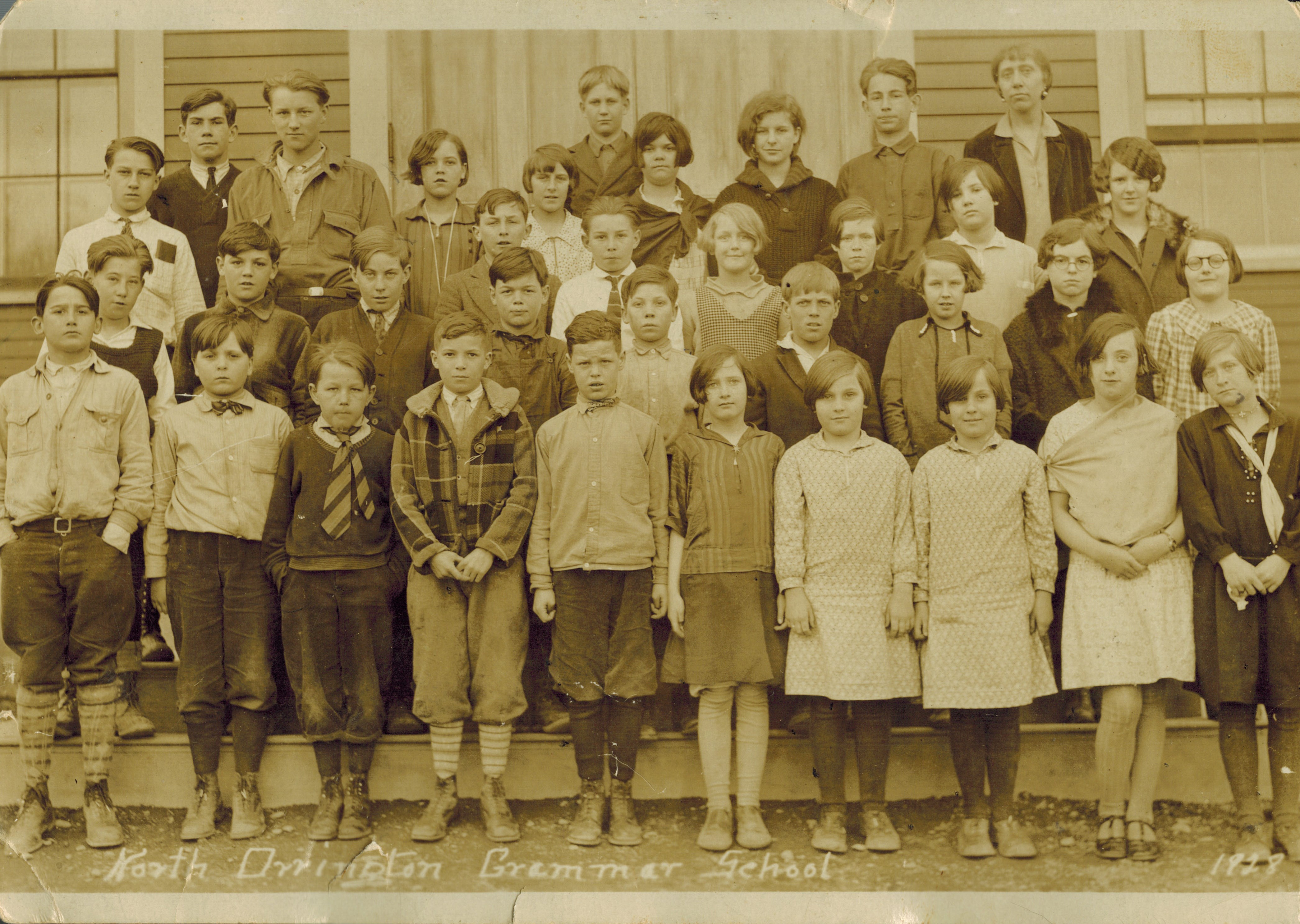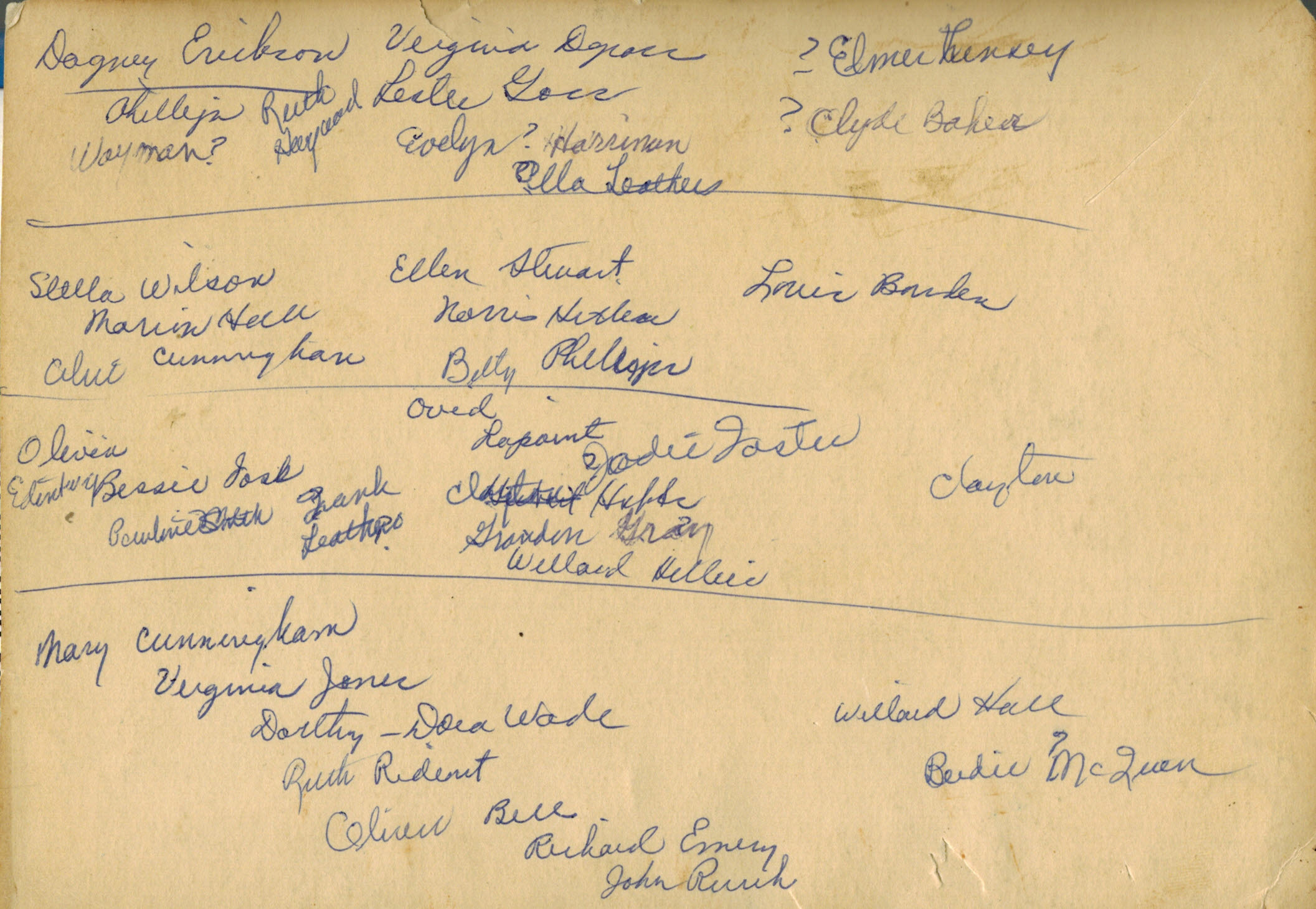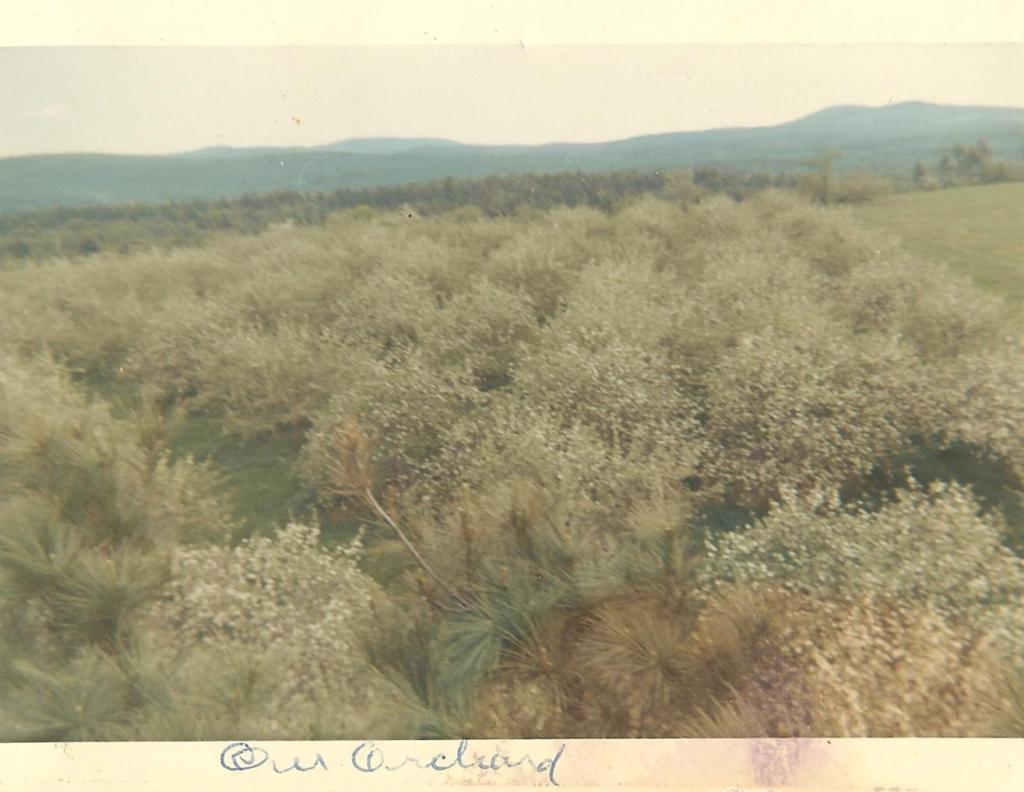Thank you to David Swett for his research efforts.
This text was retyped by Philippa Harvey in March 2011.
Helen Tupper asked me to give a talk today, and I dragged my feet long and hard because I do not consider myself a good or interesting speaker. I finally agreed as she said I could speak on town history or my family history, which has been written. This way it would not require a lot of research on my part as I was not up on the history of cemeteries in Orrington.
I made the mistake of asking David Swett if he knew where information on the cemetery that was near the old meeting house might be. He gave me two large, 500 page books transcribed from Historical Society papers and a hundred pages that he had transcribed from the town clerks’ Book #1. He also gave me his transcriptions of the gravestones of Orrington cemeteries. WELL! I am President of the North Orrington Cemetery Association and had wanted this information on the Marston Cemetery to make our files more complete. I put all this data along with our cemetery data on a spreadsheet and alphabetized it. Mary Bowden and Abigail Williamson checked it and corrections were made. I could not seem to stop so I have done the same to all the cemeteries in town, active or not. The data on the other cemeteries is being checked and these files will be up-graded. That info, along with cemetery plans, is here for you to look at if you wish. What a job Helen got me into. But then, this is the way that most of the jobs that are supposed to be of little effort turn out to be.
Most of the material I will be presenting this evening is information from David Swett’s research. Not enough can be said about the effort and determination that he has put into this. He has or is in the process of copying items about Orrington up to the early twentieth century. These records include but are not limited to: town clerk records, historical society papers (two volumes), registry of deed records, court records, probate records – and David even went to the county seats of Wiscassett and Ellsworth to do this. I have arranged the cemetery information from his work chronologically, hoping that it makes sense.
Orrington was incorporated in 1788.
In 1780 Joshua Chamberlain (grandfather to Civil War Joshua Chamberlain of Brewer) deeded to the town for $45.00 one hundred fifty square rods, or just over nine-tenths of an acre of land, for a meeting house near where the Town Pound is located on the Main Road with the stipulation that it would be used only for a meeting house, outbuildings, and sheds.
In 1799 the town elected a committee to see to clearing a road on the town lot to the burying ground and to clear the same. It is hard to tell if this reference is the meeting house or the Old Settlers Cemetery, but in any case the first cemetery by name or location is from a deed dated 1803, again from Joshua Chamberlain. It looks like the same lot, only he waived the Meeting House only requirement and allowed a burying ground to be located there. By 1806 Joseph Rooks, who apparently owned the land on the other side of the road, deeded four-tenths of an acre to the town for $24.37.
In 1809 the town voted to look into the question of a cemetery located on Benjamin Snow’s property (this had to have been Baker Hill) to see if the town had the title. Apparently they did not because nothing else is written for this cemetery.
In 1811 the town bought the private cemetery which is now called Dean Hill from Rev. Enoch Mudge. They bought one-fourth acre for $75.00. This was a triangular piece not bordering the road.
By 1826 the town chose a committee to look into buying a lot from Mr. Wheelden. This is the Old Settlers Cemetery that is no longer active. A committee was to procure a deed and fence it in. The next year the town voted to fence the cemetery near Ephraim Goodale’s. This must be the now discontinued cemetery on the Goodale Road, which is also discontinued. In 1828 the town voted to purchase and fence the Old Settlers Cemetery. I believe that your group has recorded the names of these two cemeteries previously. Swett’s list agreed very closely with yours.
Again in 1829 the town voted to fence in the burying ground near the meeting house.
In 1834 a piece of land was bought from Samuel Swett for a cemetery. This plot became the Oak Hill Cemetery.
In 1836 the town again raised the question of whether to fence the Meeting House cemetery and the new one purchased from Samuel Swett.
Some of the expenses paid on the cemeteries work were as follows:
One day myself on fence ………. $1.00
A boy for four hours …………….. $.12
A horse ………………………………..$.12
In 1850 the selectmen were requested to lay out a graveyard in the vicinity of Nathaniel Marston’s property. By that fall the selectmen had made a deal with Mr. Thomas Barstow to purchase one and one-fourth acres of land opposite old Mr. Marston’s house. The property measured ten rods on the road and twenty rods deep.
In 1855 a committee on burying grounds was appointed, and they finally got down to business. They (J.H. Nickerson was chairman) purchased eight or ten acres of land from Warren Nickerson Esq. for $500.00 to be paid for over a three year time frame. Notes and deeds were taken in a private capacity. The chairman reserved two and one-fourth acres for the burying ground (this abutted the previous lot purchased from Mr. Mudge) and sold the rest for $525.00 with $250.00 down and the rest to be a note for three years. After deducting $5.00 for interest the town ended up with the cemetery and $20.00 to boot.
At some point in 1855 the committee examined the burying ground near the old meeting house. They found very little good ground left and there was no opportunity to enlarge. They also recognized that the fence was out of repair so they recommended discontinuing this ground. They also found the graveyard at South Orrington was about all occupied, and it too had no room for enlargement. They looked around and could not find any other area that would justify paying the price being asked. A very depressing report was given for the condition and status of all the burying grounds in town. The committee recommended having one large centrally located cemetery in town.
Also in 1855 an article was placed in the town warrant in which the committee recommended the corpses be removed from the Meeting House Cemetery. Friends of the deceased would be consulted to see where they would like the remains moved. In September of that year the committee was instructed to move the corpses of those for whom consent had been given by the survivors. Other corpses would be moved to condense the yard, and they would fence in the same. The Committee on Graveyards gave their second and final report at the September meeting in which they stated that much pains were taken to consult the friends of the deceased and that all had finally consented to have the corpses removed.
Forty were moved to the upper yard in town. (No doubt Marston)
Three were moved to Brewer.
The remaining thirty-eight were moved to the Dean Hill lot.
There were one hundred eighty-one moved total.
They were instructed to build a fence around the Dean lot, which they did and described it very well in their report. Some of the fence from the old yard was used for this. They also reported that they were able to find suitable land in South Orrington for a cemetery from Mr. Wheelden at $1.50 for two acres, which became Pine Hill Cemetery. The total cost listed by the Committee was:
Lot purchase at South Orrington ……………………… $1.50
Fencing the same …………………………………………….$95.78
Blasting and digging stones ………………………………$132.71
Moving one hundred, eighty-one corpses …………..$160.34
Total……………………………………………………………….$539.29
Note: This does not add up to the mentioned figure so no doubt there is something left out. The labor for moving the corpses was typically billed at three days labor at $5.50. For the next few years several bills were submitted to the town for digging stones and blasting rocks in graveyards.
By 1859 it appears that one of the old graveyards on Center Drive between Johnson Mill Road and East Dow Road was dug up and the bodies were taken to Oak Hill.
It would seem miraculous today if we could get a cemetery moved from conception to completion in the span of one year, but it was accomplished then.









